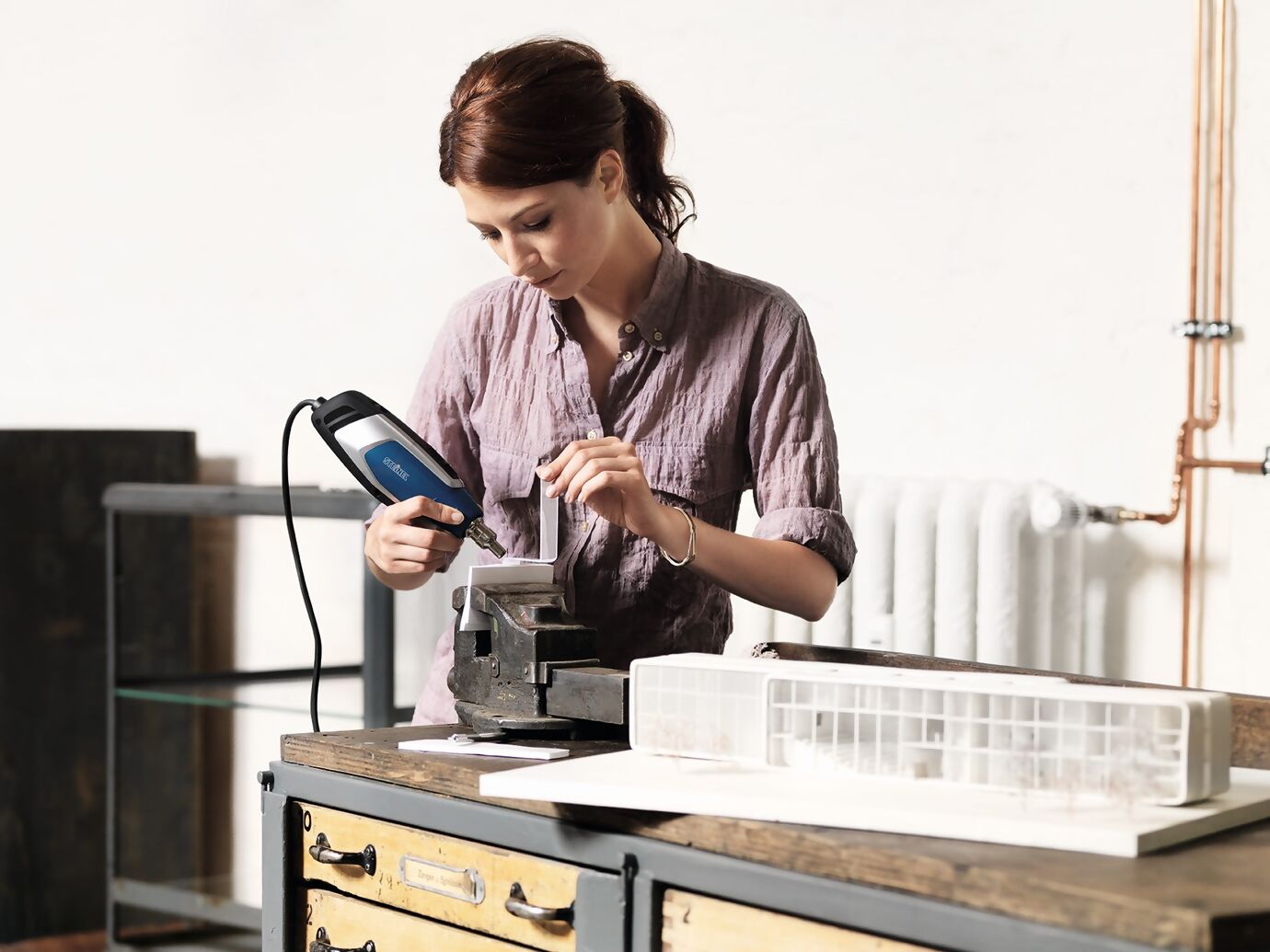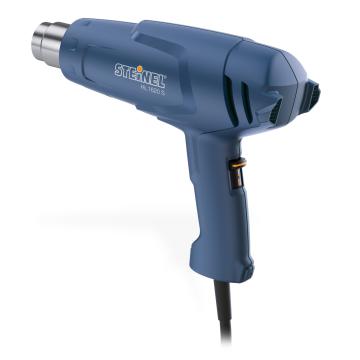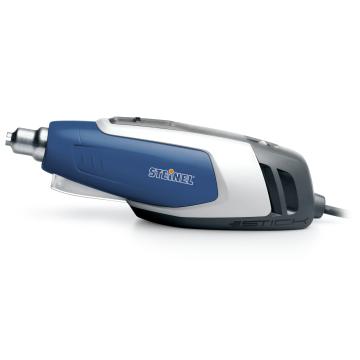As universal helpers and problem solvers, hot air blowers have long been part of the basic equipment of households, workshops and service cases. Whether it's shrinking cables, removing paint and varnish residue, shaping plastics or even igniting barbecue charcoal: STEINEL's powerful thermal tool does hundreds of jobs as quickly as it does straightforwardly. The benefits are literally obvious:
- Universal areas of application: Renovation, household, electrical, sports, handicraft, recycling, automotive, technical medicine.
- Convenient one-hand operation thanks to functionally arranged controls.
- Carefully balanced weight distribution.
- Air filters keep foreign particles away from the inner workings of the device.
- Double protection against overtemperature.
- Patented ceramic heating system for long life.
Hot air for over 100 applications
Removing paint
Nearly all oil and solvent based paints and varnishes on wood can be removed cleanly with hot air (500 - 630 °C). For surfaces, an attached wide-jet nozzle makes the job easier, and for heat-sensitive materials, an attached blast nozzle redirects the hot air.
Shrink cables
In electrical engineering and electronics, cable ends, cable harnesses, solder joints or luster terminals are often protected by a plastic coating. For this purpose, a heat-shrinkable sleeve of suitable diameter is pushed over the corresponding point and then shrunk in with hot air (approx. 250 - 300 °C) and a reflector nozzle.
Soldering
Hot air is suitable for soft soldering. The cleaned solder joint is heated at full power (630 °C). The solder must not be melted by the hot air, but by the workpiece temperature. Reducer nozzles should be used for spot soldering, and reflector nozzles for soldering pipes.
Desoldering
Hot air can be used to dissolve solder joints again, e.g., on copper pipes, at 600 °C. With the reflector nozzle attached, the solder joint can be heated in a targeted manner. This also applies to electronic components on damaged circuit boards. These can be desoldered again with hot air and a reducing nozzle at approx. 400 °C and removed with special pliers when the solder becomes liquid.
Deforming
Plates, tubes and rods made of plastic can be deformed with hot air without burn marks. In the case of plates, the corresponding area is heated via an attached wide-jet nozzle (hot air approx. 200 °C). Pipes and rods are deformed or bent by heating them evenly all around with a reflector nozzle (approx. 250 - 500°C).
Welding plastics
For welding plastics, the appropriate welding rod is selected for each material (rigid PVC, soft PVC, PE soft, PE hard, PP, ABS). On the heated seam (approx. 250 - 400 °C) the welding rod is fed via welding shoe (welding cord) or welding nozzle (welding rod). Overlap welding Plastic tarpaulins and coated fabrics can be reliably welded with hot air. For this purpose, the hot air (approx. 300 - 400 °C) is supplied via a wide slot nozzle. This softens the material in seconds and it is firmly rolled on by means of a pressure roller. Lighting the barbecue The new special nozzle turns your STEINEL hot air gun into a turbo lighter for barbecue charcoal! The nozzle concentrates the heat optimally for rapid glow development. The extended blow-out tube ensures safe ignition and at the same time protects the hot air blower.
art, PP, ABS) the matching welding rod selected. The welding rod is applied to the heated seam (approx. 250 - 400 °C) via a welding shoe. (welding cord) or welding nozzle (welding wire).
Overlap welding
Plastic tarpaulins and coated fabrics can be safely welded with hot air. For this purpose, the hot air (approx. 300 - 400 °C) is fed with a wide slot nozzle. This softens the material in seconds and it is rolled on firmly by means of a pressure roller.
Lighting the barbecue
The new special nozzle turns your STEINEL hot air gun into a turbo lighter for barbecue charcoal! The nozzle bundles the heat optimally and thus enables rapid glow development. The extended blow-out tube ensures safe ignition while protecting the hot air gun.
Adapt
Hot air can be used to ergonomically adapt functional shoes with plastic sheathing (e.g. inliners). Usually, the use of the wide jet nozzle with a medium temperature selection (about 200 - 400 °C) is useful for this purpose. In a similar way, one can also process insoles.
Repairs of sports equipment
Cracks or fractures, e.g. in surfboards, plastic boats and the like, can be repaired quickly and safely with hot air. For long cracks, you should repair the damaged area with a welding rod of the appropriate material.
Other applications
- Dry paint
- Reglue
- Remove dirt
- Kill weeds
- Dry car mats
- Dry putty
- Remove joint compound
- Repair bumper
- Dry construction joints
- Dry wall plaster
- Remove sticker





